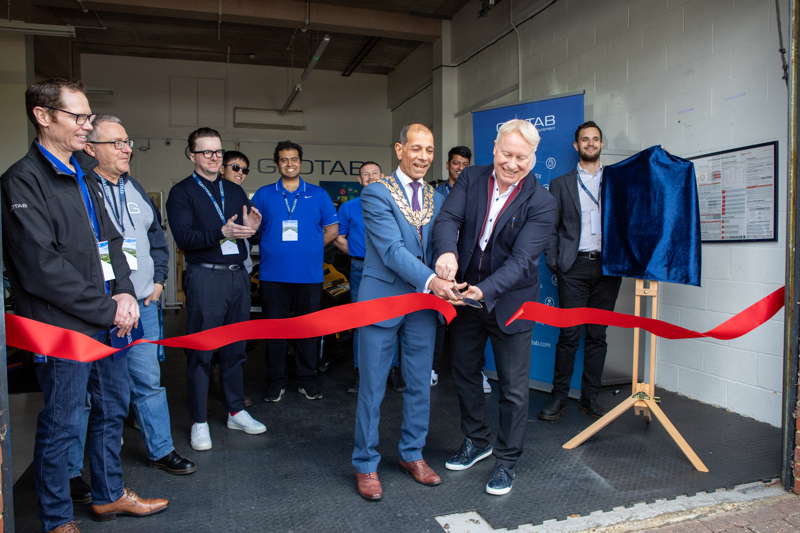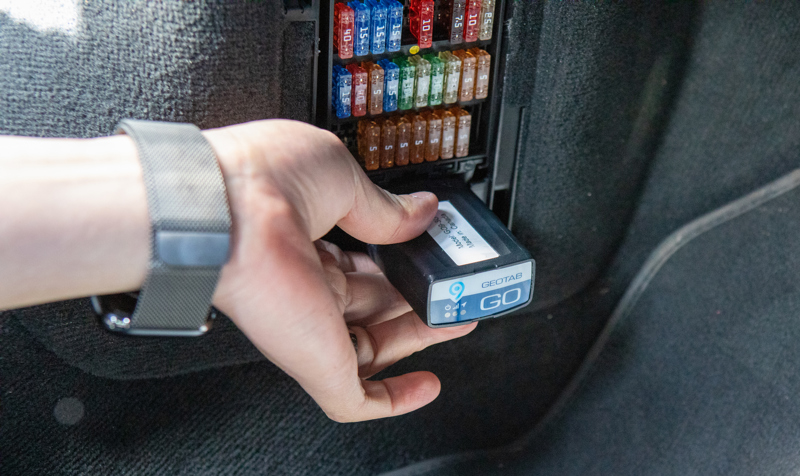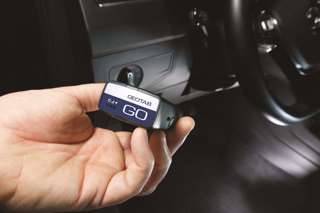Traditionally, telematics data has been used by fleets to improve safety and efficiency, but the need for organisations to become more sustainable has added another string to the technology’s bow.
The information can be used to produce far-reaching analysis, including identifying ICE vehicles which can easily be swapped for electric counterparts, as well as improving the efficiency of existing petrol and diesel vehicles.
And it is this widening application of the data which is fuelling Geotab’s ambitious growth plans for the UK.
“When I joined the business three years ago, I set out with a vision for Geotab to become the number one player in the fleet telematics market, and everything we’ve been doing since then has been delivering to that vision,” says David Savage, vice-president UK and Ireland for Geotab.
“I was employee number eight in the UK and now we’re at 35 people. Based on what we’re seeing in the market at the moment, we will be there in two-and-a-half to three years.”
Geotab was founded in Canada in 2000 and now has more than 3.5 million connected vehicles across the globe, with the UK its fourth largest country behind USA, Canada and Mexico.
Key to the company’s growth in the UK will be drive for sustainability, says Savage, with much of Geotab’s investment in the UK reflecting that.
“Safety is – and should always be – a major focus for telematics, but we’ve seen a real acceleration in the importance of data to support sustainability planning, really since Covid,” he adds.
“We went into that first lockdown in March 2020, had a little period of quietness and then nearly every dialogue we were having with customers was about their need to focus on sustainability.
“That’s continued and sustainability is now a large part of the conversations we continue to have.”

Innovation and research hub
Geotab’s investment includes opening a commercial and operational office in London, as well as a new automotive innovation and research hub in High Wycombe.
This was officially opened last month but has been operational since 2020.
This facility allows Geotab to reverse engineer electric vehicles to enable its Go telematics device to record real-time data on battery charge, energy and fuel usage as well as charging history for more than 300 EV makes and models.
“This facility is a real differentiator for us because it means we’ve got a site in the UK where we can reverse engineer a new vehicle that comes to market here,” says Savage.
“The workshop also means that if we’re looking for new solutions to be put on to our marketplace, be it a camera solution or asset tracker, we can put it into a vehicle, we can test it and ensure the quality level is there.
“Ultimately, it helps speed up everything we’re doing. It also means we are not relying on North America, which is a very different market with different vehicles and protocols.
“This has really helped us on our journey to supporting 300 EV make and models worldwide.”
Savage says this work gives Geotab parity of data across all vehicles, compared to some other telematics companies which do not offer the same consistency of data.
“I don’t want to call out any competitors, but if you look at the telematics space and look at some of the make and model support offered up, it’s not the same data points,” he adds.
“It’s one data point from this set, maybe five from another, and it’s very different.
“It takes time to reverse engineer EVs. There are no standard protocols such as those found in ICE vehicles.
“We’ve seen the same make and model from different years have different protocols and that’s why it’s important to have a facility like our hub to ensure the integrity of the data because unless you are getting hands-on with the vehicle, you don’t fully understand it
“Our customers know they can rely on that integrity and that it is true data. It is not based on an algorithm or assumptions or anything else you’d like to put out there. It is real-world.”
Geotab uses this data to power a range of tools for EV fleet management, including an EV Suitability Assessment (EVSA) that analyses unique driver profiles and patterns to identify which fleet vehicles are suitable for electrification.
Another is its Green Fleet Dashboard which help fleets track and report emissions to more effectively employ emission reduction strategies.
It also allows fleets to benchmark both their operations and individual vehicles to competitors to see which is the best fit in specific circumstances.
Savage says while a large part of the work Geotab does in sustainability is around fleet electrification, it also uses its data to help companies reduce carbon emissions from their ICE vehicles, as well as monitor and reduce Scope 1, 2 and 3 emissions.
A further area of focus is for fleet decision-makers to use telematics data has been for predictive maintenance and serving to reduce repair costs, he adds.
“Why? Well, Russia invaded Ukraine and there are supply chain challenges which means not only is it difficult to get components, their cost has also gone through the roof,” says Savage.
“Fleets are going ‘hang on a minute; firstly we’re probably going to have vehicles for longer than we initially anticipated and, secondly, we don’t want to have big repair bills on all of these, so we really need to look at how we’re managing the components’.”

Smaller fleets offer growth opportunity
Savage says the last Berg Insight report for telematics in the UK shows the current penetration rate is around 30% “so it just shows how much is left to go after”.
“If you look at the UK market, to be a top 100 fleet you have to have 500-550 vehicles and they are the ones who are most likely to already have telematics,” he adds.
“There is absolutely an opportunity in the small to mid-size fleets – from your 50s up to and around the 250s, and even up to the 500 mark – for telematics to penetrate more deeply.
“If you’re running a five to 10 vehicle fleet, the requirements may be less than for a multinational courier company, for example, but we can serve both of those spectrums.
“We are a scalable partner. If you’re coming in at five vehicles and you grow to 50 vehicles, we can support you on that, and the challenges and opportunities that come as you scale.”






















Login to comment
Comments
No comments have been made yet.